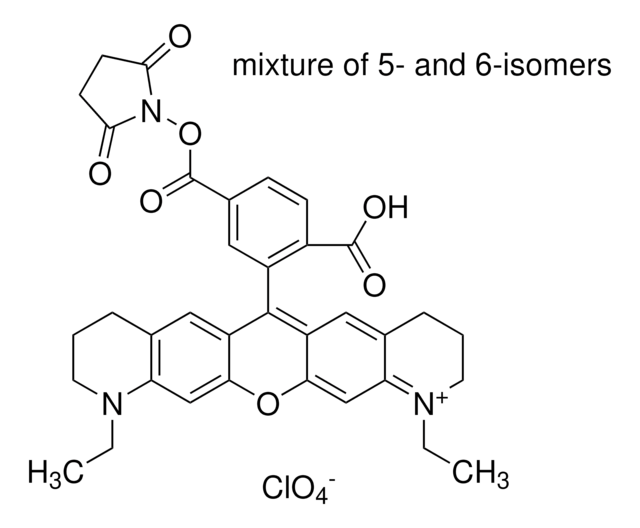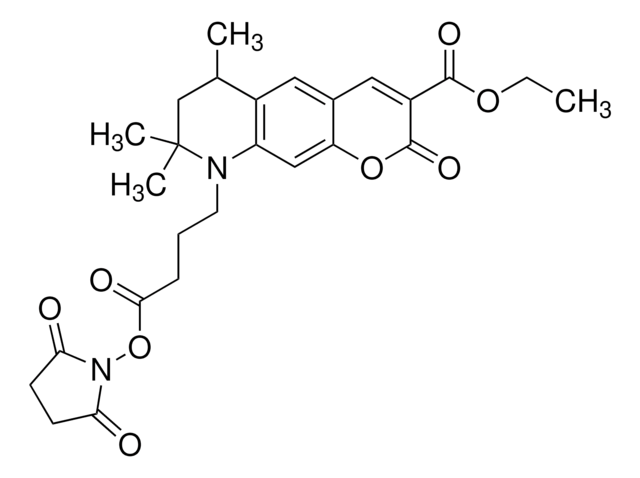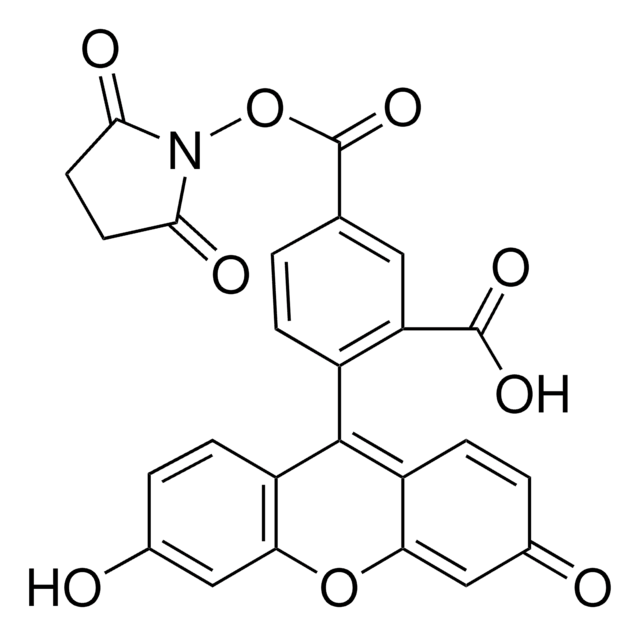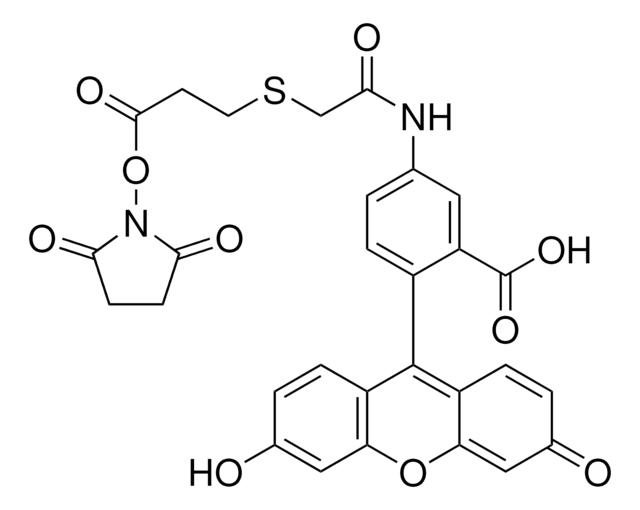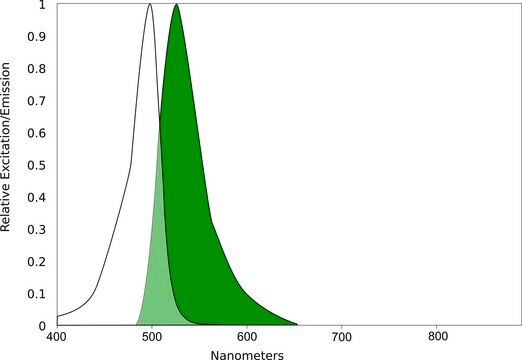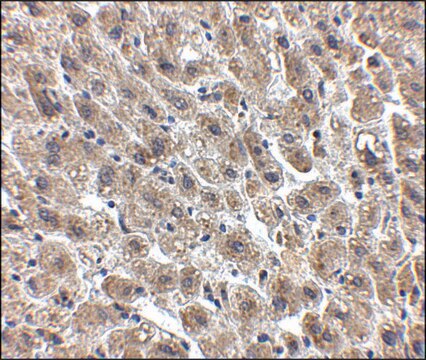67455
Atto 514 NHS-Ester
suitable for fluorescence
About This Item
Empfohlene Produkte
Assay
90% (Coupling efficiency with benzylamine, HPLC)
Qualitätsniveau
Form
solid
Mol-Gew.
Mw 1111 g/mol
Hersteller/Markenname
ATTO-TEC GmbH
Durchlässigkeit
254 nm
514 nm
Fluoreszenz
λex 511 nm; λem 533 nm±10 nm in PBS, pH 7.4
λ
(water/methanol with 0.1% perchloric acid)
Eignung
suitable for fluorescence
Lagertemp.
−20°C
Allgemeine Beschreibung
find more information here
Rechtliche Hinweise
WGK
WGK 3
Flammpunkt (°F)
Not applicable
Flammpunkt (°C)
Not applicable
Analysenzertifikate (COA)
Suchen Sie nach Analysenzertifikate (COA), indem Sie die Lot-/Chargennummer des Produkts eingeben. Lot- und Chargennummern sind auf dem Produktetikett hinter den Wörtern ‘Lot’ oder ‘Batch’ (Lot oder Charge) zu finden.
Besitzen Sie dieses Produkt bereits?
In der Dokumentenbibliothek finden Sie die Dokumentation zu den Produkten, die Sie kürzlich erworben haben.
Unser Team von Wissenschaftlern verfügt über Erfahrung in allen Forschungsbereichen einschließlich Life Science, Materialwissenschaften, chemischer Synthese, Chromatographie, Analytik und vielen mehr..
Setzen Sie sich mit dem technischen Dienst in Verbindung.
